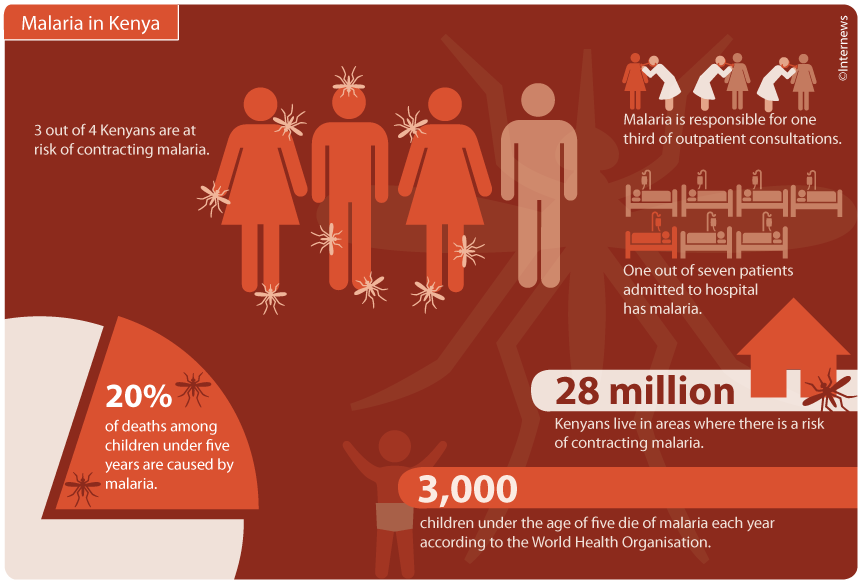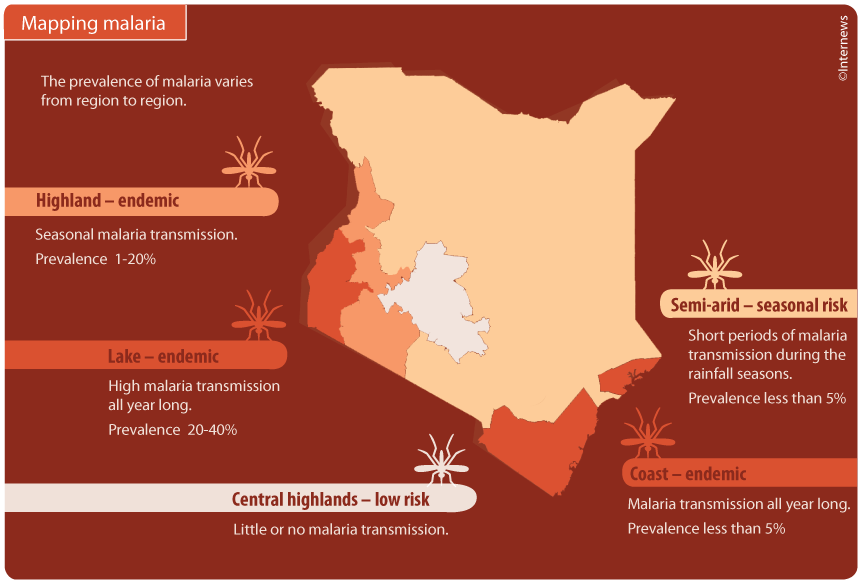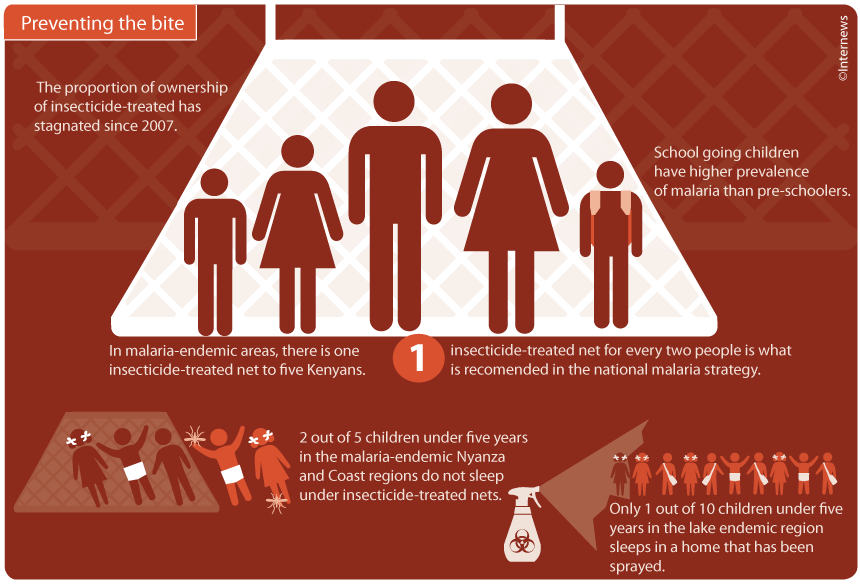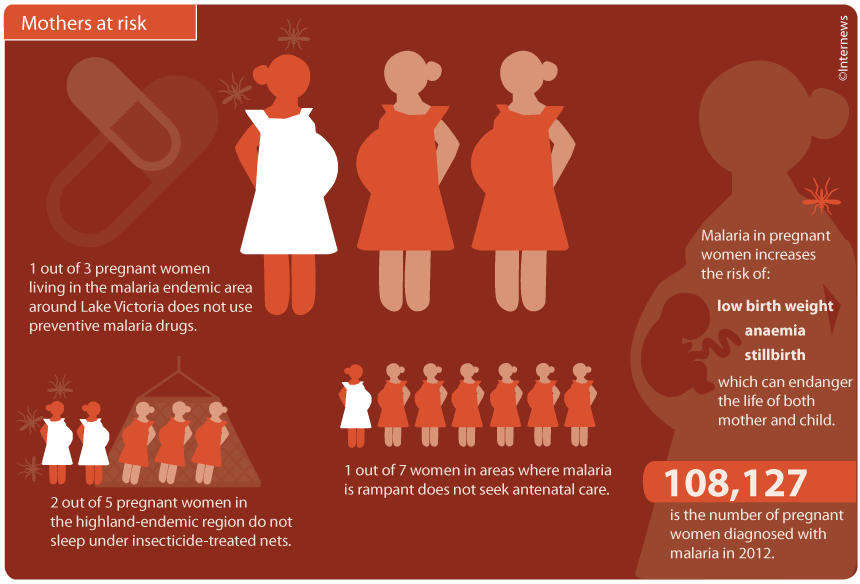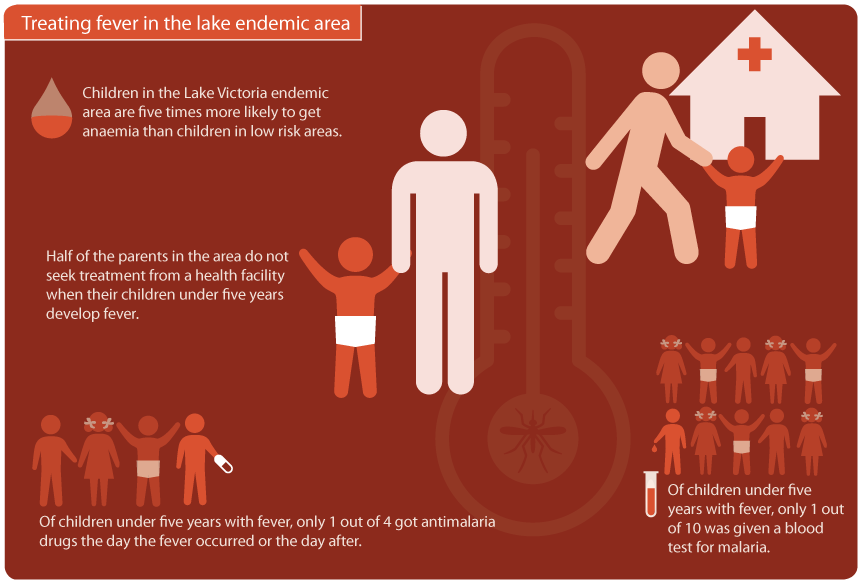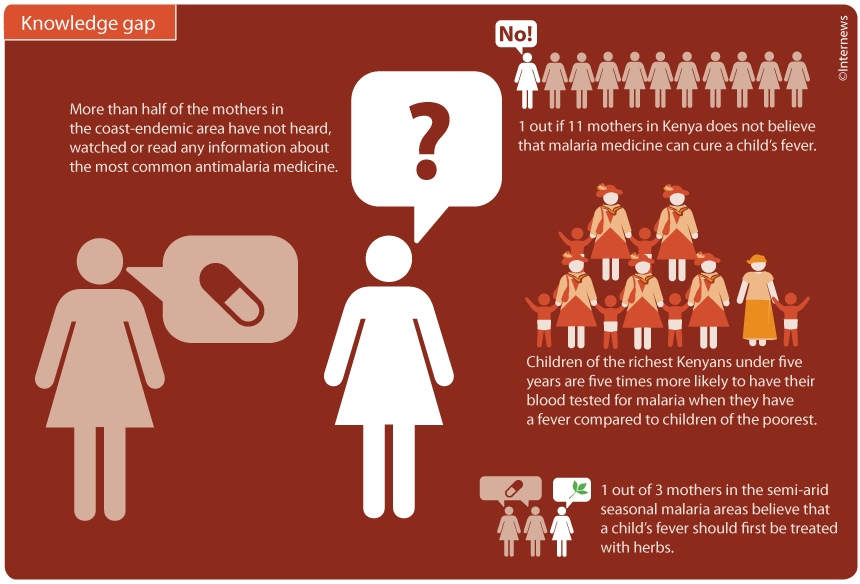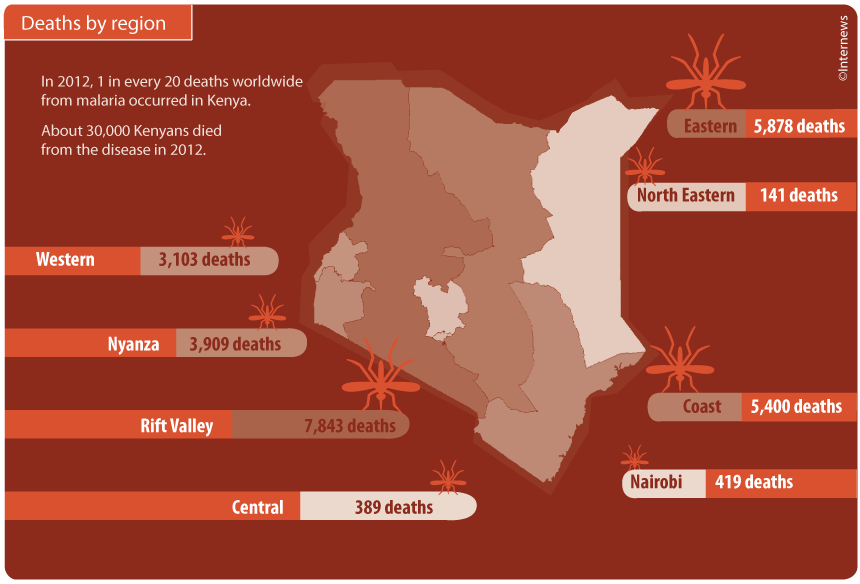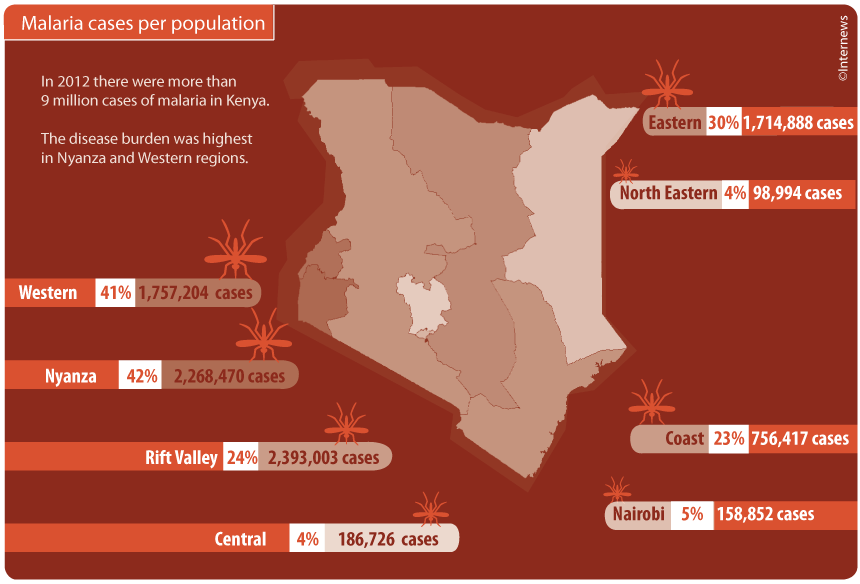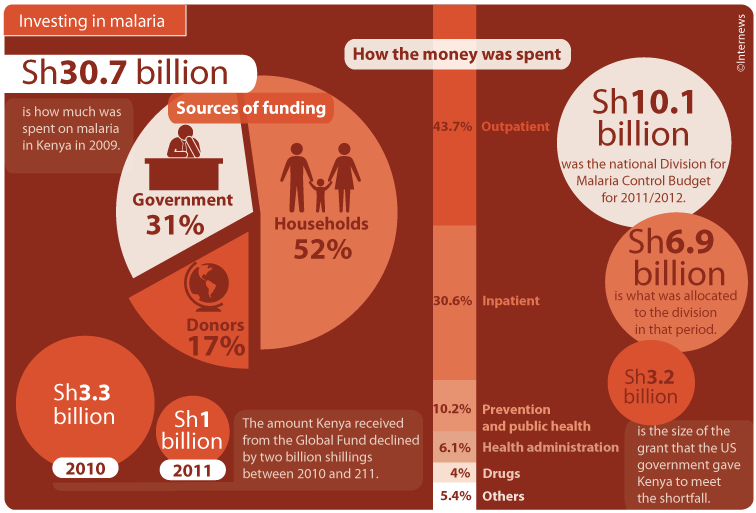Over the last 10 years, Kenya has made progress in malaria control. However, the country is still far from defeating the disease.
Compromising the fight against malaria are factors such as poor knowledge of the disease and the lack of diagnostic equipment in health facilities. Also: people are not taking preventive measures seriously - such as sleeping under insecticide treated nets. Many women are also not taking antimalarial drugs during pregnancy.
A review of data reveals that there is currently less investment in malaria than in the past. Additionally, there is a plateau in the number of houses who own insecticide treated nets. Last year alone, Kenya lost more than 30,000 people from malaria.
To roll back malaria, the Government must invest more in new initiatives and tools for fighting it even as it makes use of emerging epidemiological knowledge of the disease.


